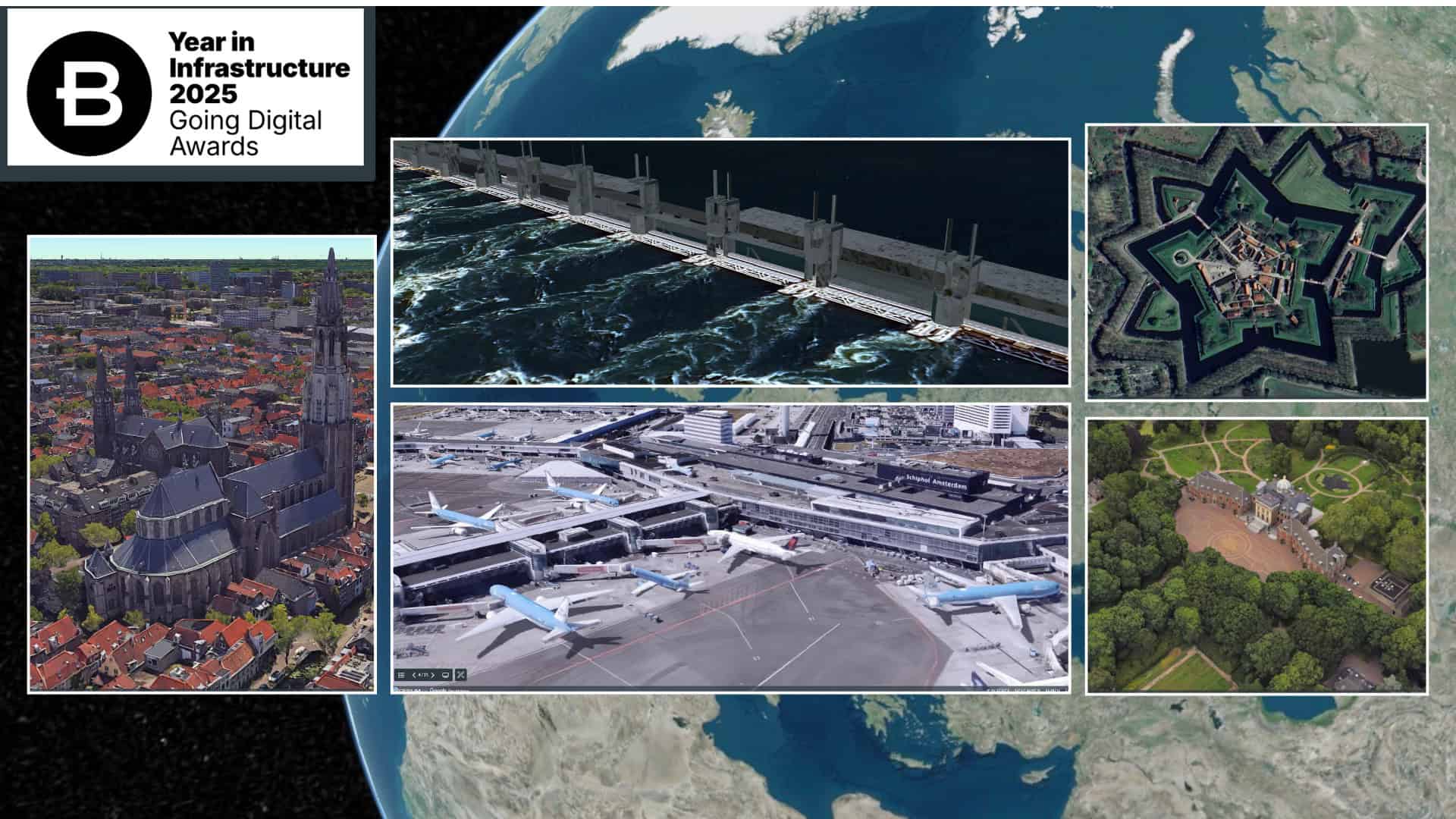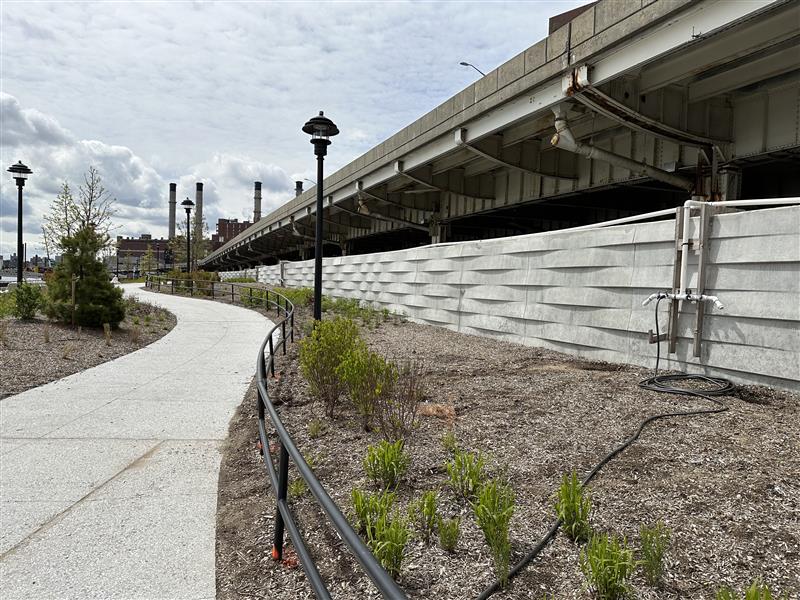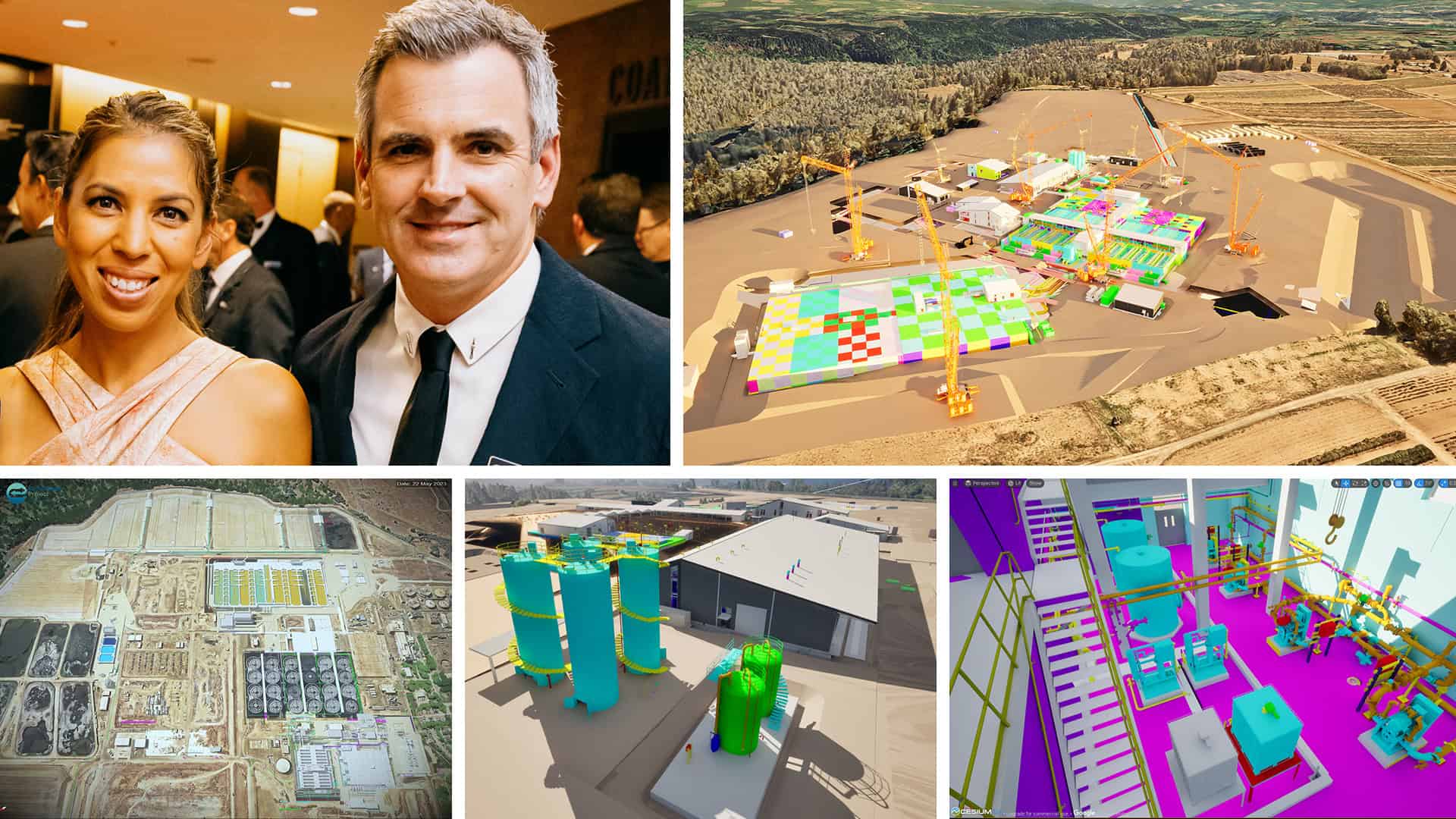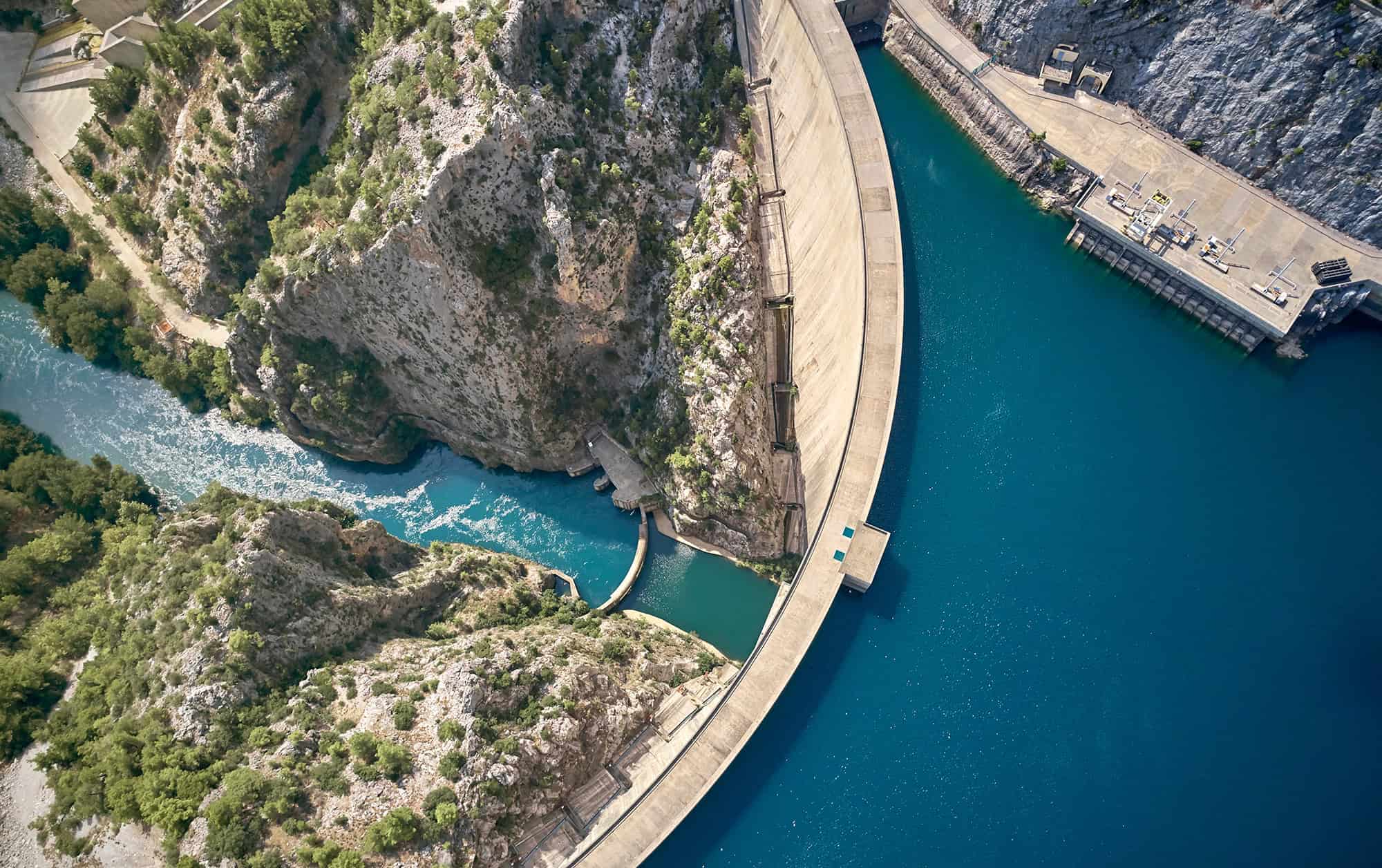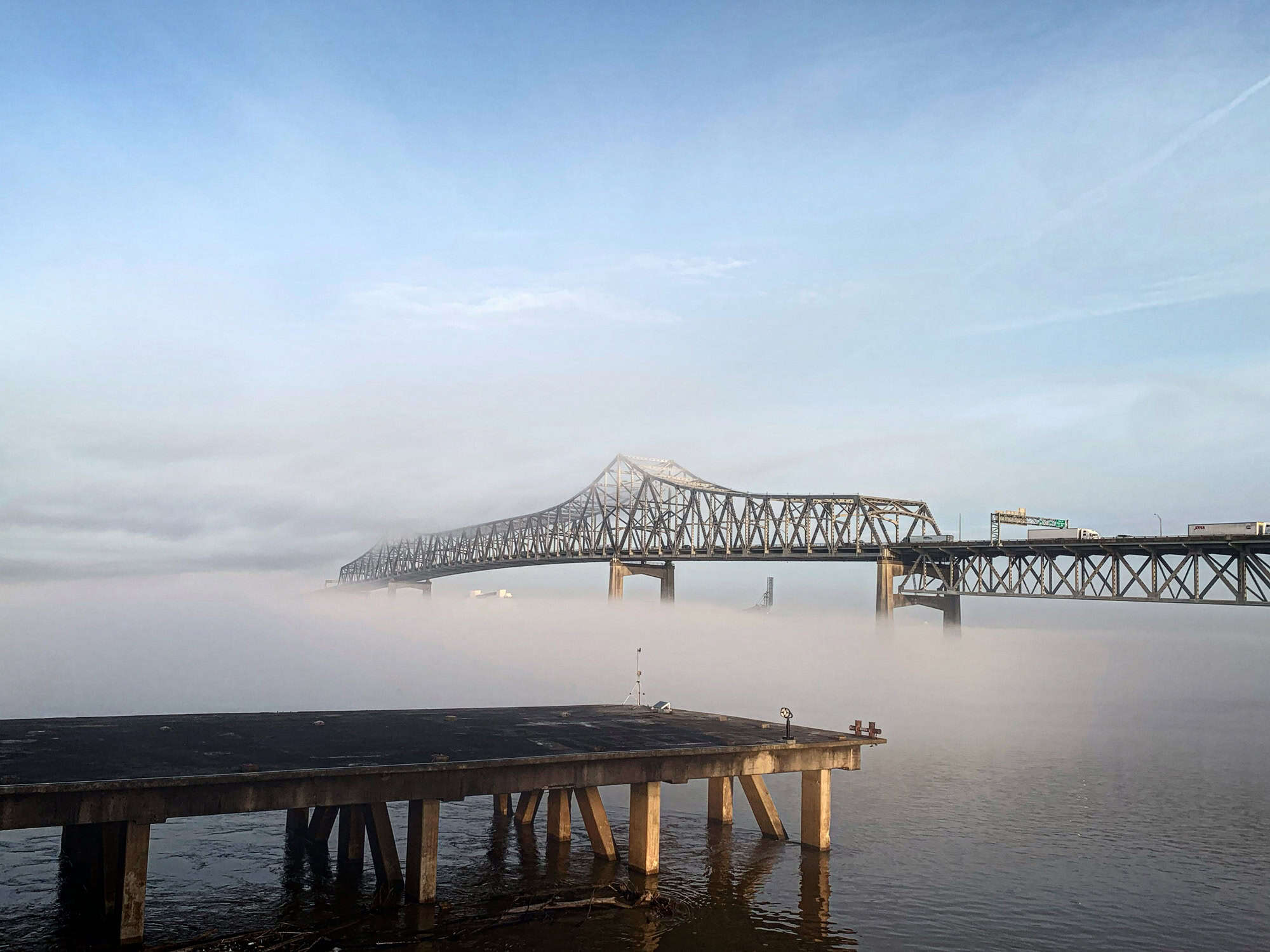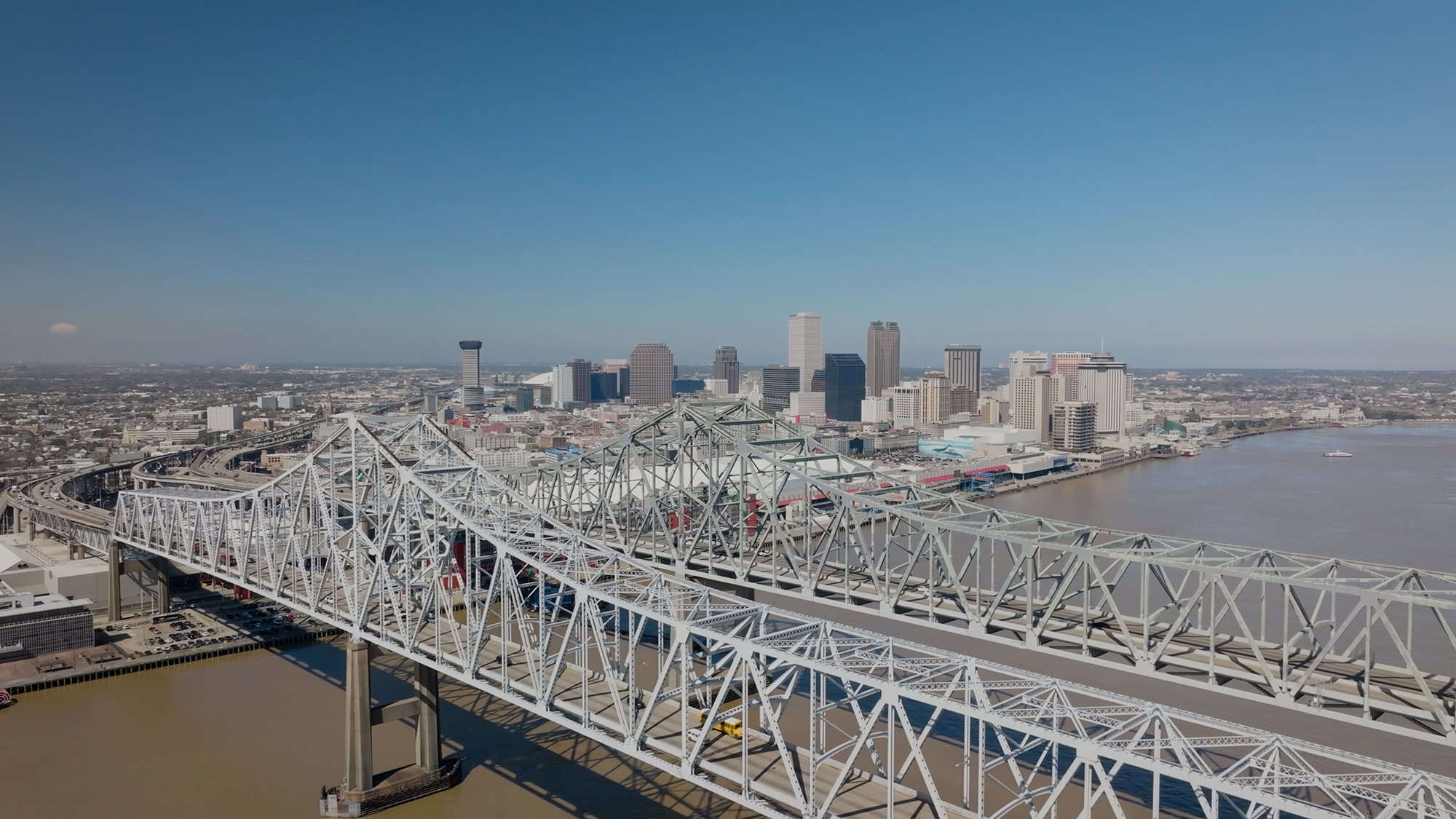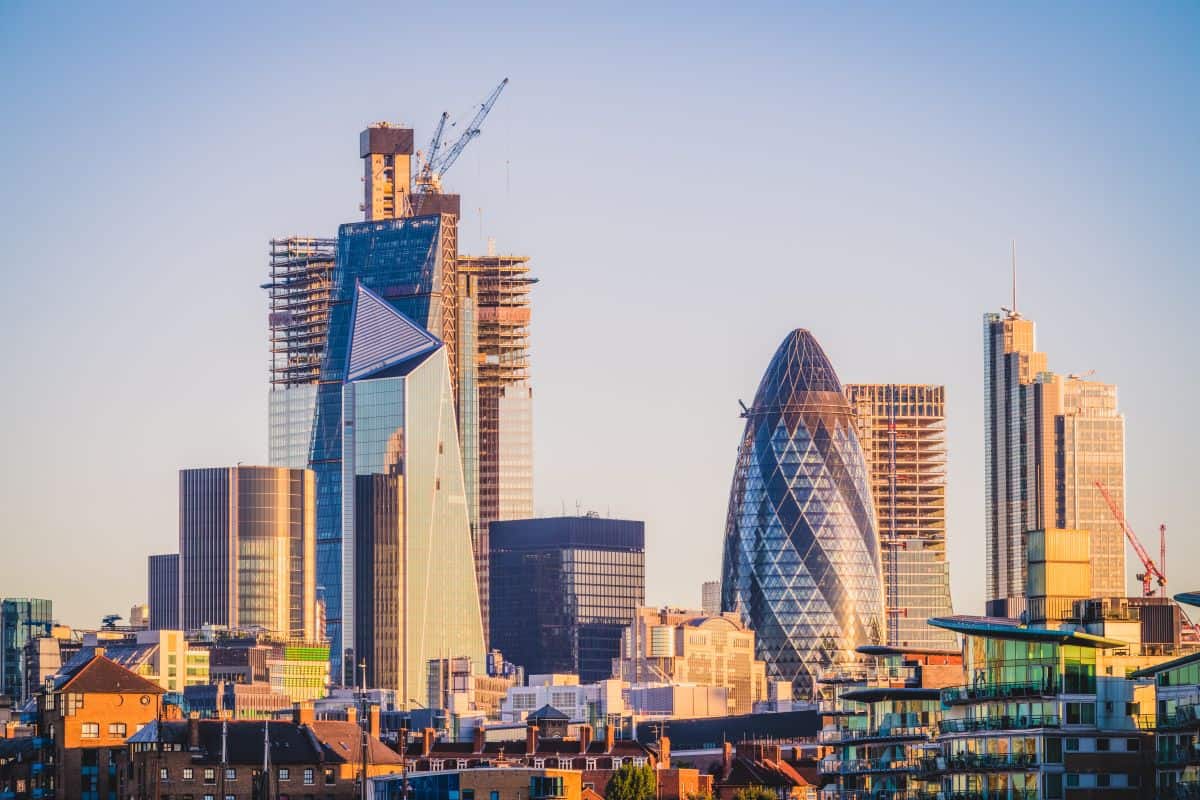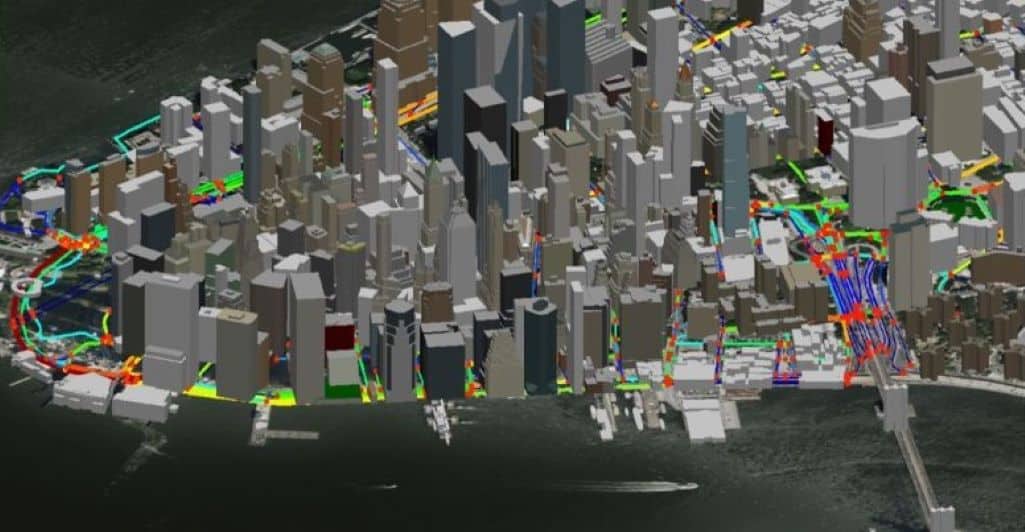In this story
- Explore Amsterdam and the Netherlands with an immersive 3D experience powered by Cesium
- See how landmarks, levees and other infrastructure fight back rising seas
- Amsterdam is a city of technology that has survived because its designers were intentional. This October, it hosts Bentley’s Year In Infrastructure & Going Digital Awards
- Try the experience here.
If Mother Nature had her way, the Netherlands wouldn’t exist. Around 2,000 years ago, Roman naturalist Pliny the Elder described the region as “a pitiful land, flooded twice a day.” It became less wretched and wet during the Middle Ages, when the Dutch began building giant dikes to keep the restless North Sea at bay and digging scores of canals to spirit away the water wrung out of low-lying polders by windmills. One of their settlements was a small fishing village called Amestelledamme, which grew into Amsterdam, the country’s capital.
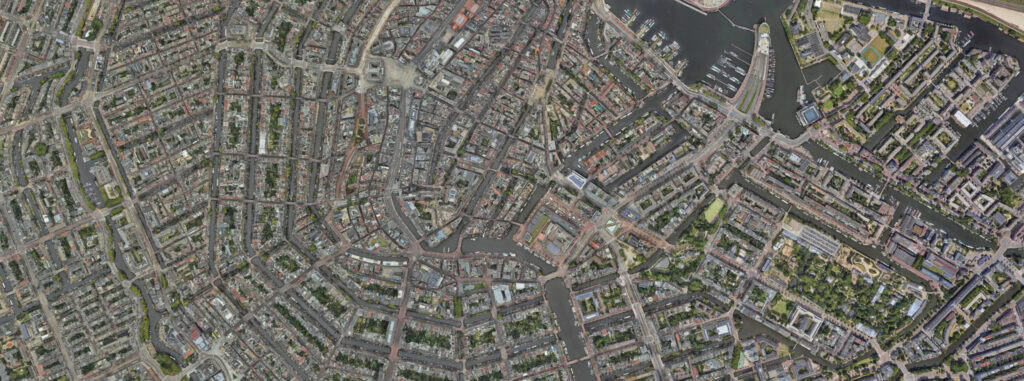
This year, Amsterdam celebrates its 750th anniversary, and the Netherlands now boasts more than 1,000 canals and approximately 22,000 kilometers of dikes (that’s roughly the distance between Amsterdam and New Zealand). The Netherlands’ ingenious infrastructure keeps the entire country safe and dry, even though one-third of its surface area lies below sea level, including Amsterdam’s bustling Schiphol Airport, where planes land at negative 4 meters altitude. No wonder Bentley Systems, the global infrastructure engineering software company, chose Amsterdam to host its annual Year in Infrastructure and Going Digital Awards (YII), an event many in the industry consider the “Oscars of infrastructure.”
The Dutch reputation for taming water overlaps with another part of its identity: the bicycle. Successive governments have opted against filling in canals to widen roads for motor cars and instead encouraged cycling around waterways. Bicycles comfortably outnumber people in the Netherlands, with 24 million two-wheelers to 17 million bipeds. It’s no surprise that the underwater bike garage is a Dutch invention. The new facility at Amsterdam’s Central Station stores 7,000 bicycles and uses state-of-the-art detection technology to show available spaces.
Climate change is a constant reminder that the Dutch are merely borrowing their land from the sea. To ward off rising sea levels, the country’s brilliant engineers are reinforcing dikes, erecting storm surge barriers, and designing floating infrastructure. Experts believe that the Netherlands could even cope with sea level rises as high as 5 meters. But the Dutch will stay vigilant, remembering the words of Multatuli, one of the country’s most famous authors: “God created the world, but the Dutch created the Netherlands.”
Starting Oct. 15, Bentley’s Year in Infrastructure will bring together global industry leaders to showcase excellence in infrastructure delivery and digital innovation. The two-day event features expert sessions, keynote speakers, and the prestigious Going Digital Awards, celebrating visionary projects in engineering, design, construction, and operations. To whet your appetite, we’ve built an interactive experience of the country’s infrastructure and main sights using Cesium 3D geospatial technology.
Bentley acquired Cesium in 2024, and geospatial tech is becoming foundational infrastructure for civil engineering—interactive, data-rich, and open by design. With the industry projected to hit $1.2 trillion by 2030, the Cesium community is shaping how we build, plan, and explore in the physical and digital realms. Check out the visualization by clicking the globe or by following this link.
#1 - Amsterdam
Amsterdam’s canals—a piece of infrastructure that lends the city its unique charm—form the city’s iconic UNESCO-listed belt, stretching over 100 kilometers and wrapping around 90 islands. Built during the Dutch Golden Age, the waterways served crucial roles in water management, trade, and defense; today, they frame the city’s picturesque gabled houses. More than 1,700 bridges connect this manmade maze, which is 1,300 more than Venice. The canals are also a watery grave for the city’s bicycles, although authorities manage to fish out 10,000 fallen bikes per year. This year, Amsterdam hosts Bentley’s Year in Infrastructure and Going Digital Awards.
#2 - Amsterdam Schiphol Airport
Amsterdam Schiphol Airport, built in 1916 on reclaimed polder land from Haarlemmermeer Lake, is the Netherlands’ largest airport and a central European hub for passengers and cargo. Encircled by dikes, it once earned the nickname “Schiphol Mudport,” and it’s still the only major airport built below sea level.
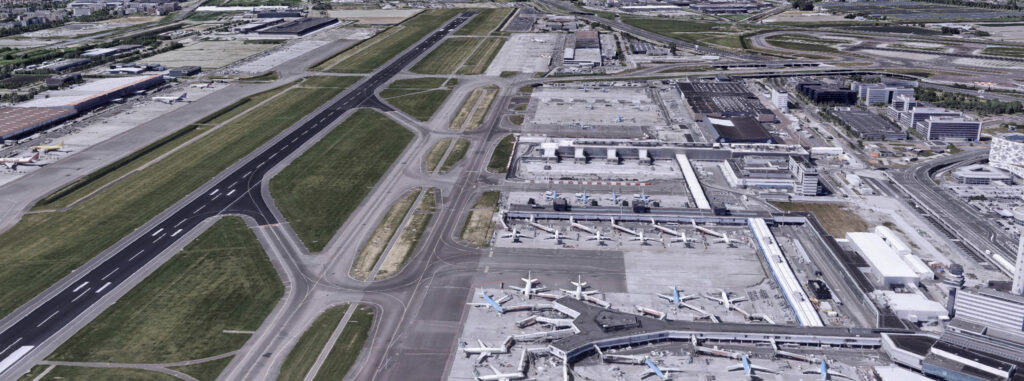
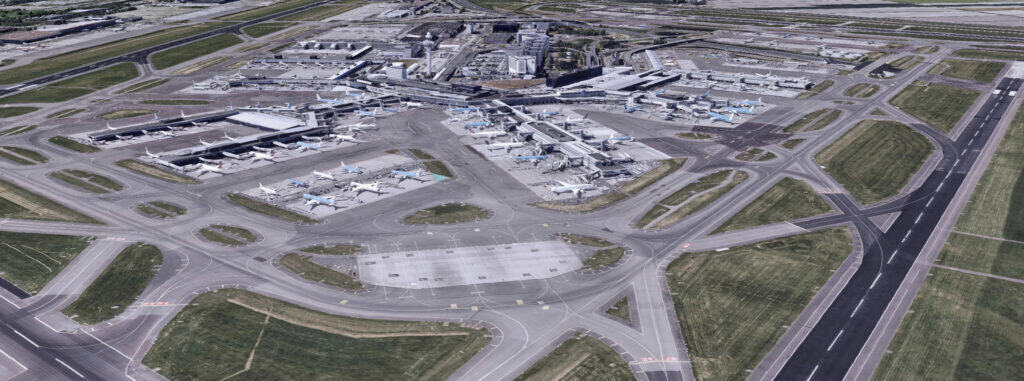

#3 - The Rijksmuseum
The Rijksmuseum is the Netherlands’ national museum, home to works by Rembrandt, Vermeer, and Frans Hals, and a 1 million-strong collection of Dutch art and history. The Gothic-Renaissance building is worthy of the masterpieces it displays: The Rijksmuseum reopened in 2013 after a €375 million, decade-long renovation.
#4 - The Royal Palace of Amsterdam
The Royal Palace of Amsterdam, originally built as a city hall in 1655, is one of the great historic monuments of the Netherlands. Designed by Jacob van Campen, the so-called “eighth wonder of the world” is notable for its lavish Empire furniture and grand interior. However, it’s also a remarkable civil engineering achievement. It’s a monument built on sand, owing its stability to 13,659 wooden piles driven deep into Amsterdam’s spongy soil.
#5 - The Anne Frank House
The Anne Frank House is a museum in the canal house where Anne Frank and her family hid for over two years during World War II. The Secret Annex was concealed by a movable bookcase, which has been well preserved. One moving detail is the marks drawn on a wall by Anne’s father, Otto Frank, which tracked his daughter’s growth.
#6 - Amsterdam Centraal
Amsterdam Centraal is the city’s main railway station, completed in 1889 and designed by Pierre Cuypers, who also built the Rijksmuseum. The station welcomes over 250,000 daily passengers, connecting trains, trams, buses, and ferries across the city. Like the Royal Palace, the Centraal was also constructed on thousands of wooden piles, which formed an artificial island in the soggy sand.
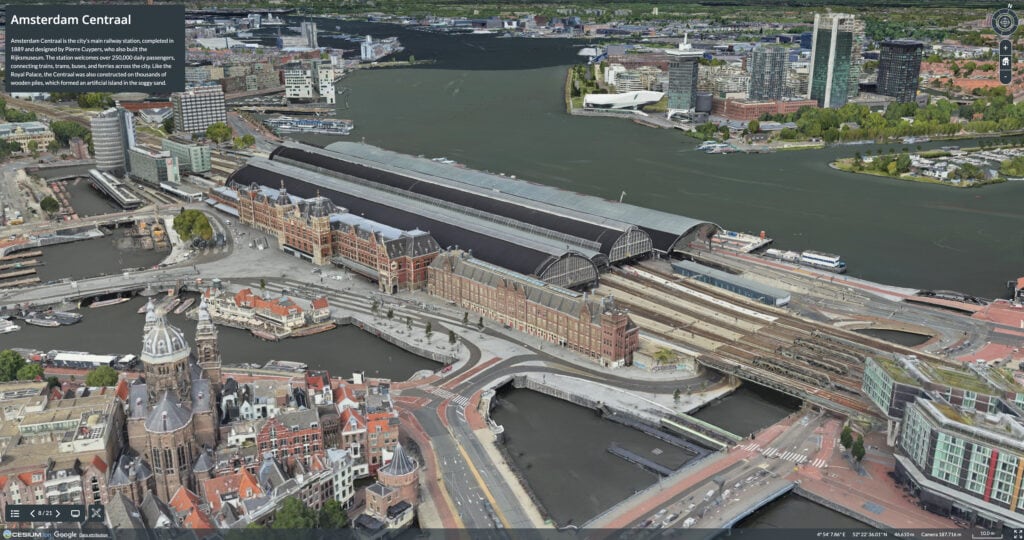
#7 - The Westerkerk
The Westerkerk is Amsterdam’s largest purpose-built Protestant church, designed by Hendrick de Keyser in the Dutch Renaissance style and completed in 1631. Its iconic 85-meter tower, the Westertoren, is the tallest in the city and features an imperial crown gifted by Emperor Maximilian I. Although Rembrandt was buried here in 1669, the exact location of his grave remains unknown.
#8 - Keukenhof
The Netherlands is famous for its tulips, and flowers love water. Keukenhof, known as the “Garden of Europe,” is one of the world’s largest flower parks, located in Lisse. Founded in 1949 by Dutch growers to showcase their spring-flowering bulbs, it now displays over 7 million flowers annually and attracts thousands of visitors. Keukenhof means “kitchen garden,” a reference to its original use supplying herbs to a castle kitchen.
#9 - Huis ten Bosch
A short ride on the train from Amsterdam Centraal is Huis ten Bosch, a royal palace in The Hague. It was originally built in 1645 as a summer residence for Amalia van Solms, a German noblewoman who became the Princess of Orange. Its ornate “Oranjezaal,” or Orange Hall, showcases several famous Golden Age paintings. Huis ten Bosch was meticulously restored after sustaining damage during World War II.
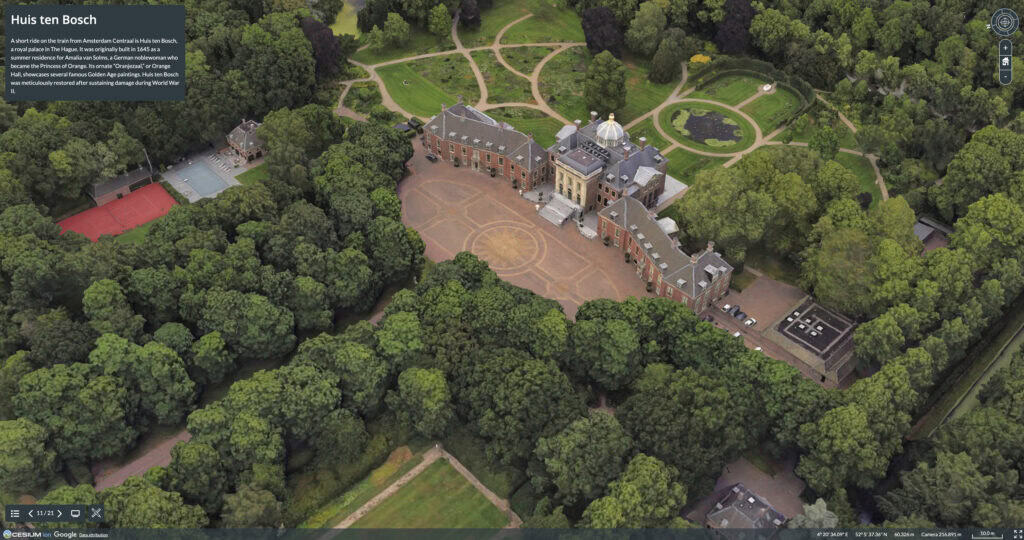
#10 - Royal Delft
Royal Delft is the last remaining Delft Blue pottery factory from the 17th century. The company is famous for its hand-painted blue and white earthenware, inspired by Chinese porcelain imported during the Dutch Golden Age. (Ports are another key part of Dutch infrastructure.) It’s been continuously active for over 360 years, weathering wars and economic changes alike.
#11 - Volendam
Volendam is a charming Dutch fishing village, founded in 1357 when the locals of nearby Edam (yes, that one) created a new harbor by digging a shorter canal to the Zuiderzee, then an inland saltwater bay. The work led to land reclamation and settlement. This infrastructure enabled the village’s famous colorful wooden houses, kept dry its traditional clothing featuring a distinctive high-pointed bonnet, and supported a rich fishing heritage.
#12 - Bourtange
Bourtange is a star-shaped fortress village built in 1593 by order of William the Silent, the leader of the Dutch Revolt against Spanish rule, which sparked the Eighty Years’ War. Bourtange’s strategic purpose was to control the only road between Germany and the city of Groningen, then occupied by Spanish forces. The village’s network of canals and moats were natural defenses, making it nearly impregnable. Clearly, there is more than one way that infrastructure can lead to resilience.
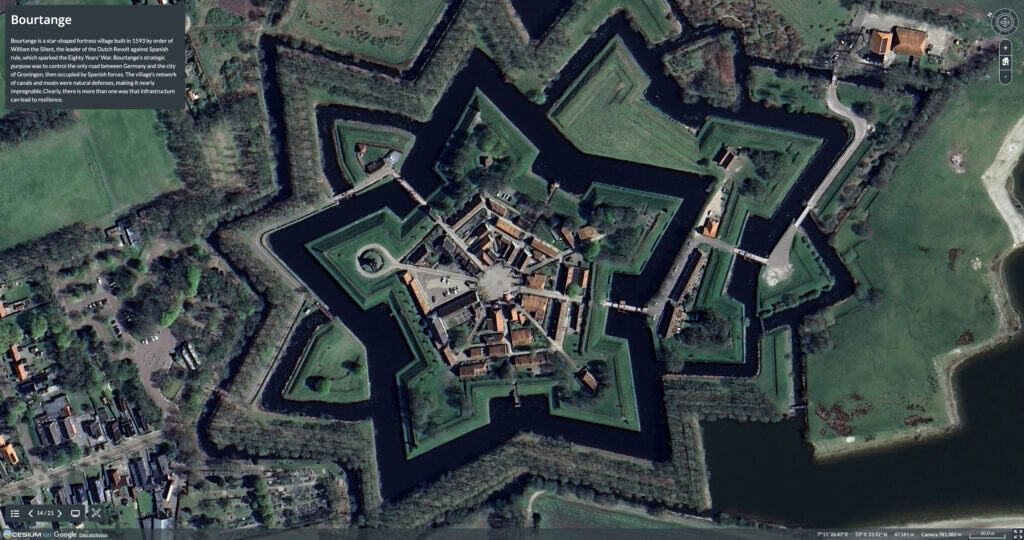
#13 - Giethoorn
Giethoorn is another charming Dutch village founded in the 13th century. Known as the “Venice of the North,” the village is famed for its canals, thatched-roof houses, and peaceful lifestyle. When it comes to infrastructure, Giethoorn residents have long embraced their imagination. The village has no roads in its old town, and boats are the primary way to navigate through its 176 bridges and waterways.
#14 - Zaanse Schans
Zaanse Schans is a historic open-air museum village near Amsterdam that showcases traditional Dutch life from the 18th and 19th centuries. Iconic windmills, cheese farms, and clog workshops abound.
#15 - The Oosterscheldekering
The Oosterscheldekering, or Eastern Scheldt storm surge barrier, is the largest and most iconic tranche of the Netherlands’ Delta Works, designed to protect the country from North Sea flooding. Spanning almost 9 kilometers, the barrier features 65 giant concrete pillars with 62 steel gates that are usually open, allowing sea life and tides to flow. They close during storms, which cause surges.
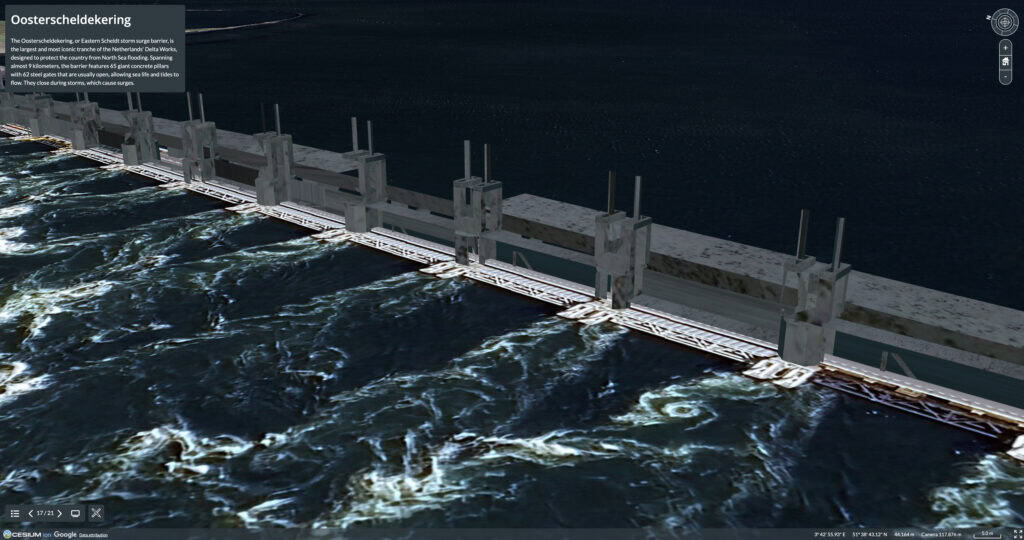
#16 - Scheveningen Pier
Scheveningen Pier is a famous wooden pier extending nearly 400 meters into the North Sea. It was originally built around 1900 as a promenade and rebuilt in 1961 after a fire. The pier now offers panoramic sea views and hosts attractions such as a Ferris wheel, bungee jumping, ziplining, shops, restaurants, and even luxury hotel suites. An amazing fact: Scheveningen Pier features the Netherlands’ first Ferris wheel over the sea with enclosed, air-conditioned cabins, offering spectacular coastal views. You can even spot the country’s huge offshore windfarms.
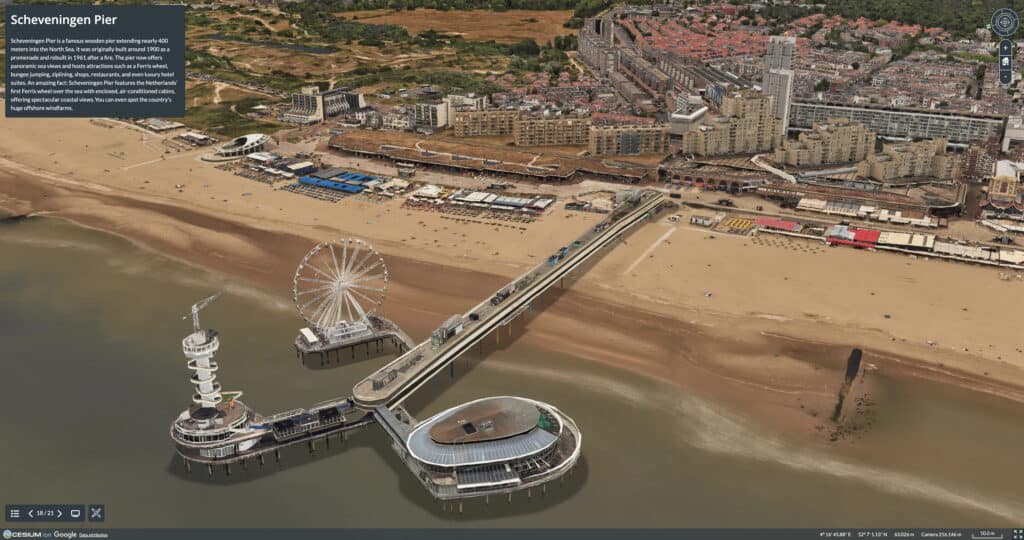
#17 - Port of Rotterdam
Another crucial part of Dutch infrastructure is The Port of Rotterdam. Europe’s largest, the port sits at the confluence of the Rhine and Meuse rivers, and the busy North Sea. It connects the continent to the world, handling more than 465 million tons of cargo annually, which arrives by sea, river, rail and road. As well as its state-of-the-art automated terminals, Rotterdam boasts the largest fleet of floating cranes in Europe. Bentley software can help ports, too. It helped transform the Port of Melbourne in Australia.
#18 - Hollandse Kust Zuid offshore wind farm
Hollandse Kust Zuid is the country’s largest wind farm, capable of generating up to 1.5 gigawatts, which is comparable to the output of a nuclear power plant. Its 139 offshore turbines are spread over 225 square kilometers, an area larger than the city of Amsterdam. On a clear day, you can see the turbines from the Dutch coast, as they’re 18 to 36 kilometers out to sea. They boast 200-meter rotor diameters, making them some of the most powerful and efficient offshore turbines globally. Solutions from Bentley Systems, Cesium, and Seequent, the Bentley subsurface company, have been helping model and build offshore wind farms.
